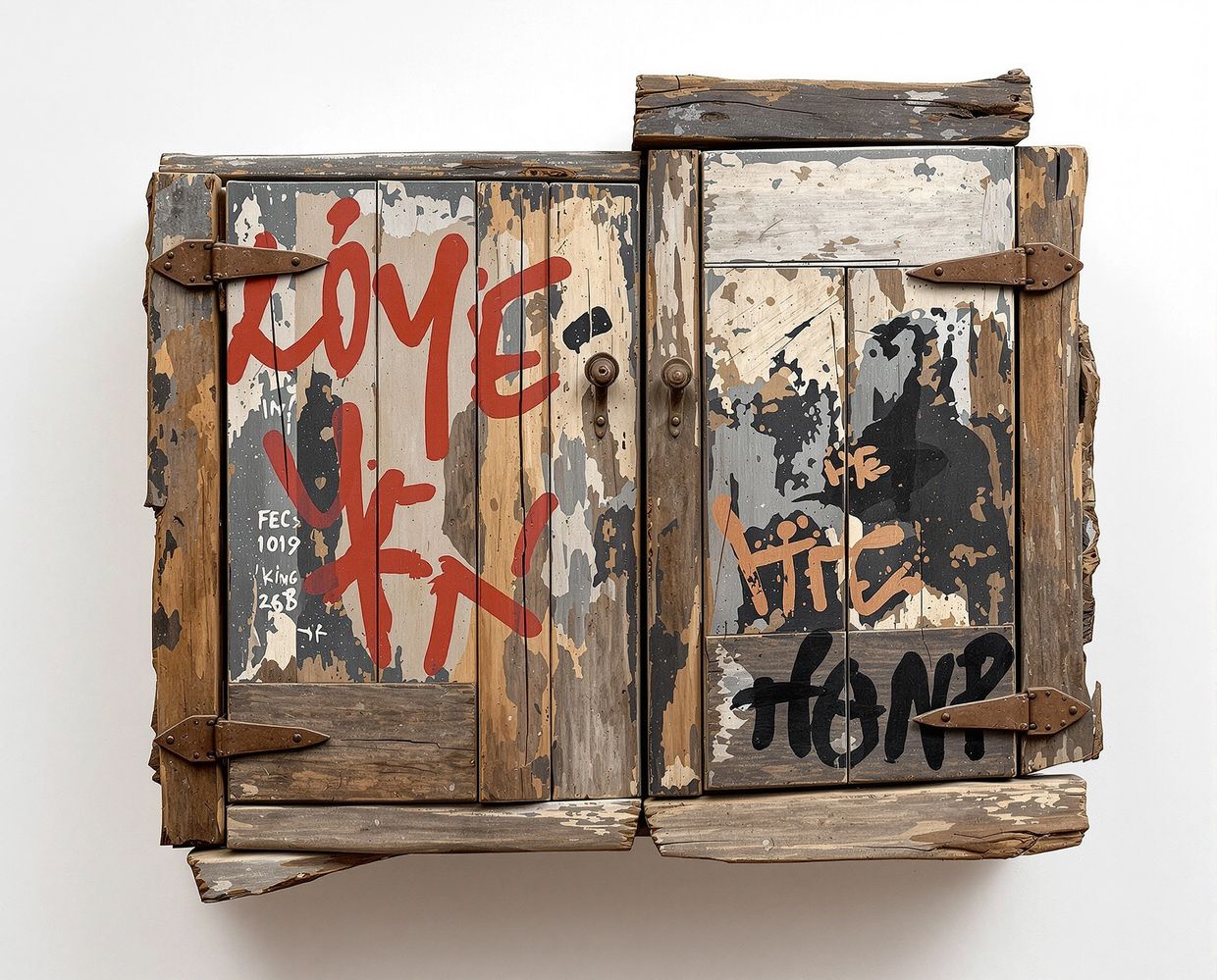Arca: fictional driftwood cabinets

If Robert Rauschenberg built his Combines from the wreckage of modernity, these works are assembled from the wreckage of reality itself. Arca is an act of synthesis, conjuring materiality through the immaterial. These cabinets exist, yet they do not. Their surfaces tell a story of decay — peeling paint, rusted hinges, tarnished metal, splintered driftwood — yet they have no weight, no scent, no tactility beyond the glass of a screen. They are artefacts from a parallel history, crafted not by hand but through synthography — a process that does not replicate the real but invents it anew. Wood does not rot; metal does not corrode; hinges do not stiffen. They only appear to. Yet their cracked paint, corroded latches, and traces of graffiti suggest history — a past function that never truly existed. Ce n’est pas la réalité.
At home I live with a collection of handmade driftwood cabinets. Their construction is simple at the core — solid backs and sides of ordinary timber — but their faces are intricate, assembled from weathered planks, salvaged locks, and rusted hinges. They are at once functional and improbable: rough fragments transformed into objects of unexpected beauty. Arca extends that fascination into another register. Using artificial intelligence, I reimagine the cabinets not as furniture but as impossible artefacts — objects summoned from latent space, where fragments of wood and metal combine into forms that feel real but exist only as probability. The material illusion of driftwood, peeling paint, and corroded fittings remains, but the objects exist only as images: plausible, tactile, and yet unreal.
Arca fabricates reality and forces the viewer to believe in its past. These objects were not built with wood and metal. They were crafted with language — words precisely arranged to summon form from nothingness. And so we return to the central question: what is material, and what is illusion? AI does not carve wood, weld metal, or apply layers of peeling paint over decades — yet here, in these images, it has done all of those things. The eye believes because it wants to. Arca is a paradox of craftsmanship — an architecture of decay, a relic from a history that never happened. In the physical world, these works do not exist. And yet, here they are.
“Everything you can imagine is real.“ — Pablo Picasso
Copyright © David Name 2025.
All rights reserved.